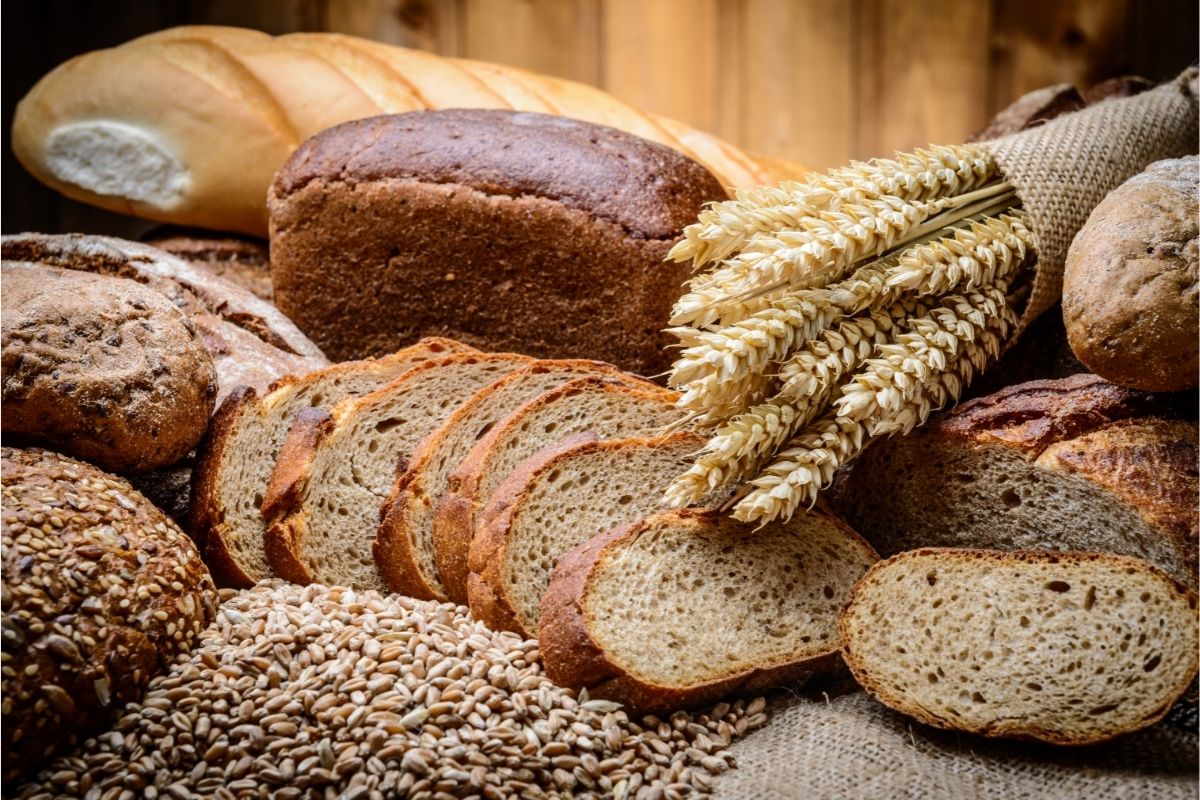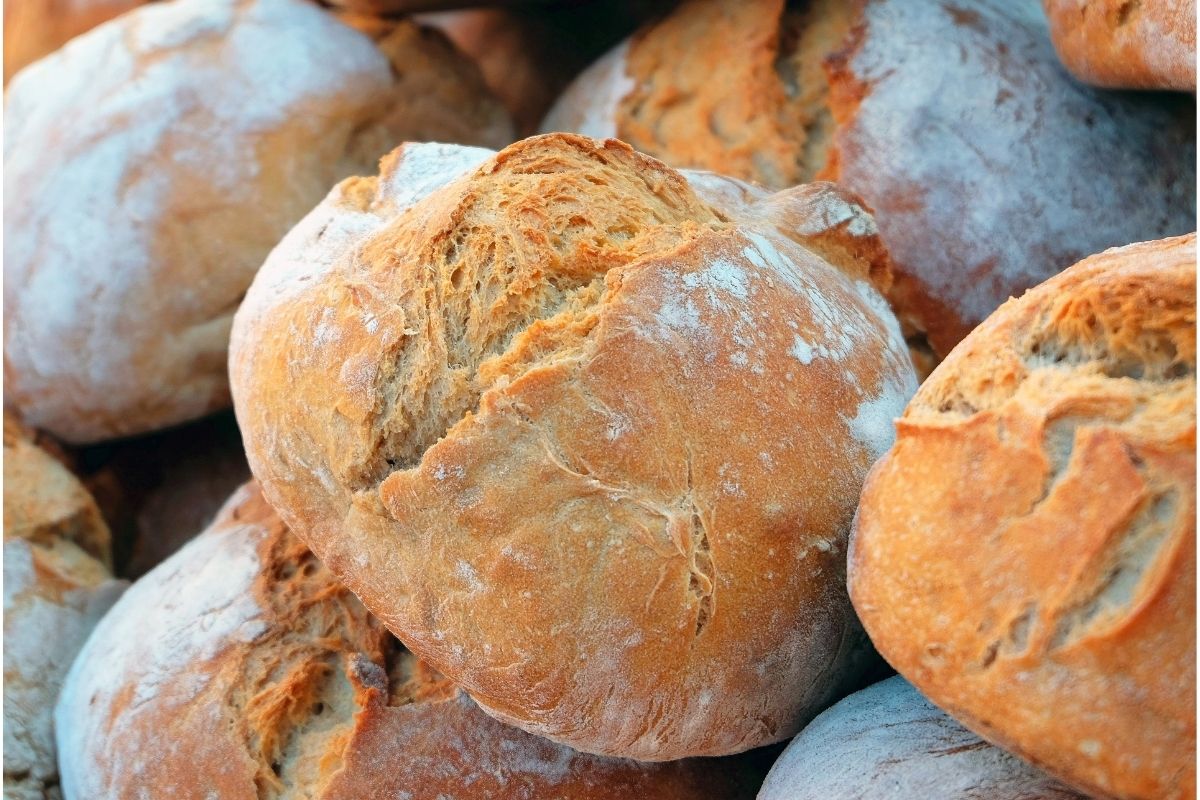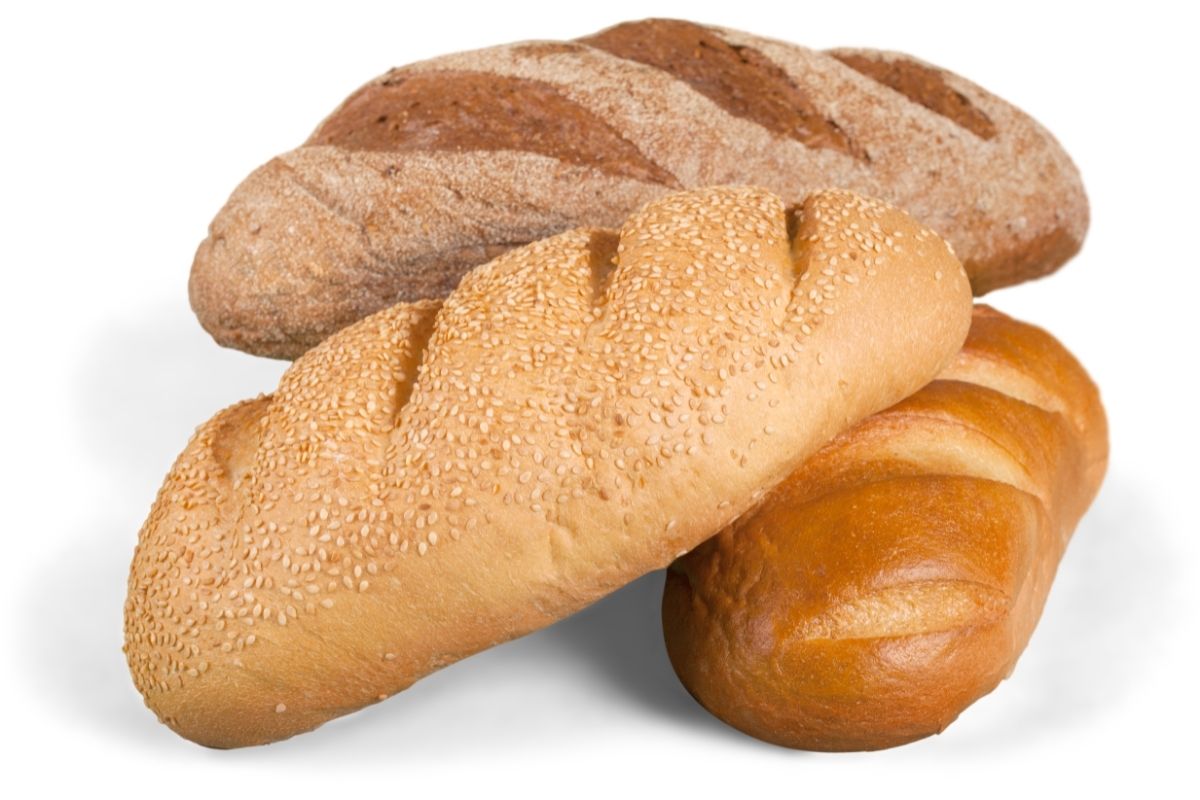Why Does Bread Go Stale?
Have you ever thought of how to make hard bread soft? The bread gets hard and stale in dry conditions, although it can also be stale under humid conditions. As a result, staling happens when the bread cools, and the spongy water and starch molecules begin to reorganize themselves.
Soaked bread water seeps out into the crust and subsequently into the atmosphere. The starches tighten again, and the bread hardens. Colder temperatures speed up this process.

Preventing Hardness and Staleness in Bread
What Happens When Bread Goes Stale?
Your bread is at its freshest when it has just come out of the oven and has cooled down. Staling sets in quickly after that. Bread loses its freshness as it ages, loses its crunchy crust, and the middle becomes dry and chewy.
To consume truly stale bread, you’ll need a lot of chewing and teeth force. However, stale bread has not gone bad! It’s still safe to eat. All you have to do is think of how to make hard bread soft again, but it’s no longer as tasty. Moisture migration and starch retrogradation are the two primary mechanisms that cause bread to go stale.
Moisture Penetrates The Crust
Most foods have a significant tendency for water to move around. Energetically, it’s preferable if the water is spread equally throughout the diet so that the water activity is consistent. This happens in various meals, including bread, pies (why the crust loses its crunch after a time), creme brulees, and many others.
The crust is much drier (and has a lower water activity) than the middle when it comes to bread. As a result, fluid from the center will quickly flow into the crust after cooling the bread. Furthermore, if you live in a humid climate, moisture from the air is likely to penetrate the crust.
In the worst-case scenario, you’ll be able to get rid of that entire crunch in only a few hours! Keep in mind that only a small volume of water needs to travel for all of this to happen.
According to research, just around 3% of the water in bread travels around enough to soften the crust and make the middle of the loaf less moist.
The Significance of Starch
Even though moisture plays an important role, it only explains a portion of why bread becomes stale and becomes dry! As it is, the leading cause of stale bread isn’t due to the bread drying out. Instead, a molecular reorganization of the starch in bread is to blame.
Like many other primary food sources worldwide, wheat flour, such as potatoes, rice, and cassava, has significant starch. Amylose and amylopectin are two types of molecules that make up this carbohydrate. Amylose is a lengthy chain of glucose units that is a very simple chemical.
Amylopectin gets generated from glucose, but instead of being a straight chain, it has a branching structure. Every crop has a slightly variable ratio of these two molecules, resulting in slightly varying starch behavior.
It contains starch in flour in the form of granules. These granules absorb moisture when spread in water (think of mixing flour with water). When these granules are heated, they swell and absorb additional liquid.
They lose some crystalline, meaning their structure becomes more disordered, whereas they were previously crystalline. It is not necessary to comprehend the specifics, but it is essential to understand how staling occurs.
The granules sometimes split, releasing primarily amylose into the rest of the dough. Gelatinization is the term for the entire process. You’ve seen gelatinization at work if you’ve ever used a roux to thicken a sauce (such as a bechamel).
Gelatinization is irreversible once it has begun. You won’t be able to return to your original granules of starch. Or, to put it another way, you won’t be able to turn the bread back into the dough, even if you replenish the water it may have lost!
Consider freshly baked bread, newly cooked rice, or a freshly baked potato for examples of freshly gelatinized starch. However, the starch in your bread changes over time, causing it to get stale, the potato to become chewy and dry, and the rice to become firmer. Retrogradation is the term for it.
Retrogradation of Starch
Starch rearranges the structure of bread during the drying process. Although the molecules cannot return to their original granules, they can organize themselves in a little more structured manner within the bread. The amylose and amylopectin molecules can reposition themselves and form structures within the bread.
As a result, the starch becomes more organized and crystalline. This is the primary cause of stale and dry bread! Amylopectin and amylose retrograde in various ways. Amylose retrogradation occurs more quickly and is less reversible than amylopectin retrogradation.
Fortunately, heat may reverse some of these structures, opening up new possibilities for repurposing your old bread. If you leave it long enough, almost any bread will become stale. However, there are several techniques to slow down the process dramatically. They are as follows:
Do NOT Store Bread in The Fridge
To begin with, do not store freshly baked bread in the refrigerator. While storing bread in the fridge inhibits the growth of bacteria, it hastens the process of starch retrogradation. To put it another way, it cuts down on the time it takes for bread to spoil.
When the bread is refrigerated, the starch molecules in the bread recrystallize very quickly at chilly temperatures, causing the bread to stale considerably faster. Rather than keeping store-bought loaves in the fridge, please keep them in an airtight plastic bag at room temperature.
Store bread in the freezer if you’re worried about staling and rotting. Freshly baked bread that you have been freezing will come out virtually precisely as it did when frozen, and you can store it for months.
You Should Include Enzymes
Breaking starch into maltose, a complex sugar; breaking complex sugars into simple sugars; and breaking protein chains catalyzes enzymes in the bread-making process. Partially breaking down those complicated starch molecules is a systematic way of preventing staling. It won’t dry if they can’t form those structured crystalline formations.
Amylases are specialized enzymes that can break up starch molecules. The heat breaks down Amylases in the oven, so they’ll work inside the dough, splitting up the starch molecules just enough to prevent retrogradation later. As we’ve already seen, amylases aren’t merely out there to avoid staling.
Using a Sourdough Starter
It takes time for the starter to digest the sugars and starches in the flour, and it hasn’t had enough time to become active yet. This is why it’s best to let the starter sit for 4 to 12 hours before using it in a bread recipe.
It is also well documented that you can store sourdough loaves for several days without getting stale and inedible! The bacteria in sourdough are assumed to work in a similar way to the enzymes mentioned before. They disassemble particular starch (and even protein) molecules, reducing the amount of staling.
Distinct sourdoughs will have a different influence because each variety of bacteria is slightly different. It’s somewhat complicated!
Add Fat
Fat impacts the finished bread’s texture in addition to flavor. The fat covers the gluten strands, making the crumb and crust soft and finely grained. It also adds moisture to the loaf.
You may have noticed that an enhanced bread with additional fat takes a little longer to get stale than a regular basic bread with no fat. By lying in between all those starch molecules and preventing them from developing that more crystalline structure, fat can slow down retrogradation. Generally, fats are an excellent way how to soften the bread.

4 Ways How to Make Hard Bread Soft Again
Combine the Bread and Celery in a Bag
Will putting a sad loaf in a bag with a stalk of celery and leaving it out overnight result in great bread? Some people say yes, but I’m not convinced. Celery contains a lot of water, and dry bread will probably absorb some of it. However, given that it does not involve any heat, it didn’t seem like the ideal solution.
And, to be honest, your celery bread may not be as tasty. Keep the two in a rolled-up paper bag for around eight hours. As a result, the bread will become noticeably softer but mushy, moist, and unappealing. It may also have a celery-like aroma. All in all, it will refresh stale bread.
Using a Damp Paper Towel, Microwave the Bread
Wrapping bread in a damp paper towel gives moisture and heat, while the microwave increases heat. So, theoretically, you should have everything you need to apply on how to make hard bread soft in a microwave, right? Nonetheless, the outcomes may be disappointing.
Your stale bread will become noticeably softer and moister after encasing it in plastic wrap and microwaving it for one minute. However, instead of becoming crisp, the crust may become squishy. If it doesn’t bother you, this method will work, but you may find it to be mediocre. Regardless of your results, the process was able to soften bread in the microwave anyway.
Bake The Bread Wrapped in Foil
This method appears to be a positive step in the right direction. As the bread warms up, the foil wrapping will seem to trap some steam, resulting in a softer texture. Allowing the loaf to sit in a 375° degrees Fahrenheit (190° degrees Celcius) oven for 10 minutes would provide enough heat to crisp up the outside of your bread.
This process works far better than the other two previous methods. You will enjoy how the crust becomes fairly crisp. The disadvantage is only that the rest of the bread may dry out as well. As a result, the texture may not be remarkably fresh. Instead, it will simply advance the clock by a day or two. Nonetheless, it gives you a perfect answer on how to soften stale bread.
Sprinkle the Bread With Water Before Baking It
Spraying water over bread dough before baking helps keep the top of the dough moist during the first few minutes of baking, which in turn allows the dough skin to be more flexible and expand when the bread begins to cook as a result of the baking process.
This technique appears to be the holy grail. You lightly sprinkle the crust of your bread with water before wrapping it in foil and baking it. The process hopes to replenish some of the moisture that has been lost in your bread, resulting in a loaf that is crisp on the exterior and soft on the inside.
Is your loaf now flawless? This may not be the same bread you bought four days before from your neighborhood bakery. But that was a close call! This strategy was by far the most effective of all the ones you will imagine. However, this process will help you keep your old bread fresh.

Hard Bread? No Problem
You’ll need two things to bring stale bread back to life: moisture and high heat. These critical components were provided by lightly spraying the crust with water, sealing the loaf in aluminum foil, and baking at 375 degrees Celcius (707 degrees Fahrenheit) for 10 minutes, resulting in my four-day-old bread tasting surprisingly fresh.
Wouldn’t it be preferable if you could avoid the bread from going stale in the first place? If you know it will be a few days before you can complete the loaf of bread, consider freezing it instead of eating it all right once.
This article contains instructions that will demonstrate how to unstale bread successfully. This can assist in limiting moisture loss and keep your old bread fresher until you’re ready to eat it if done correctly.

Community of passionate writers and content creators who share a love for Italian heritage, culture, travel, food, and the Italian-American community. Our mission is to celebrate Italy’s rich history and traditions and connect with others who share the same passion.

